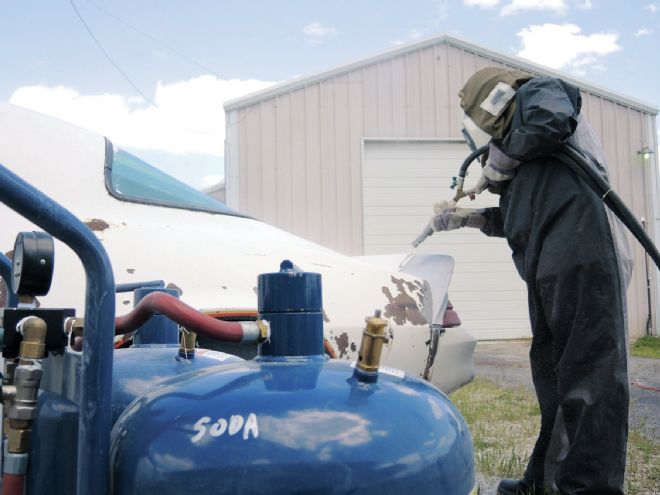
Mediablasting can be an expensive proposition if you outsource it. Sometimes it's necessary to blast every crack and corner of a vehicle, sometimes not—it depends on the goals and condition of your project. In our case, we're spending money sensibly; our car doesn't need to be blasted in every corner. It's got one respray, some bad bodywork, and the typical amount of rust that would plague most 1978 Chevrolet Camaros, so we're "spotblasting" around the rust zones, dissimilar materials, and caked-up filler and paint. The doorjambs and most of the floors are in good shape with original paint, which is a great foundation to build on.
We got great results by spotblasting with Eastwood's Dual Blaster loaded with soda on one side and aluminum oxide on the other. As well as stripping paint, blasting reveals hidden damage that can be covered by dirt and undercoating. Being able to switch media on the fly for fragile materials like aluminum, pot metal, urethane, and fiberglass—even blending the two for stubborn spots—is a handy thing, which really helps when you're going to do the job right while also on a budget.
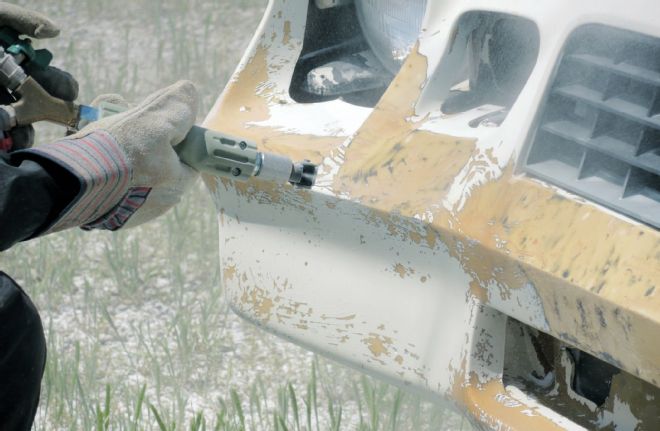
We're using Eastwood's Dual Blaster system with pressurized canisters that don't require an industrial-sized air compressor. More importantly, we have the option of two different mediums designed for different substrates. Obviously, safety is a priority, so we've got a blasting hood, heavy gloves, and a protective suit to wear for this job.
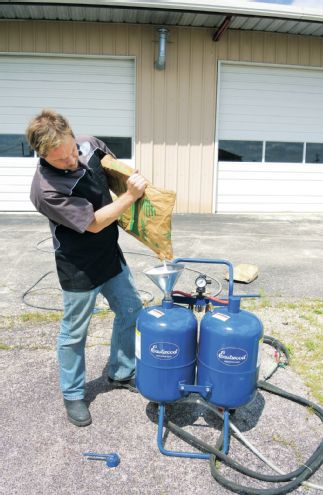
The first tank is loaded with soda. It's not baking soda, but a cleaning grade of sodium bicarbonate that is safe to use on fiberglass, chrome, glass, and our front and rear urethane bumpers. Soda removes the paint, but doesn't damage the base material.
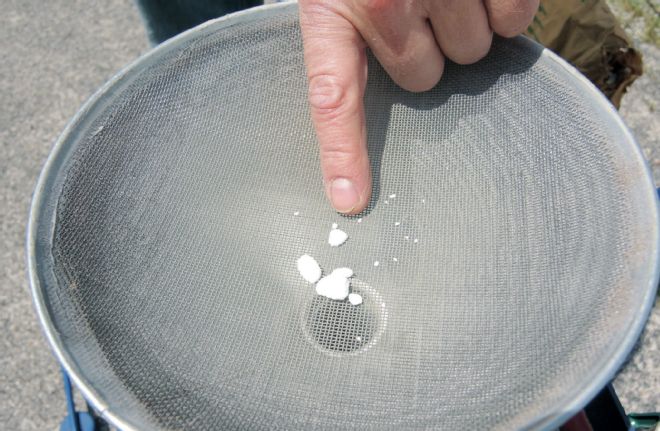
The funnel has a strainer, and this photo shows why: lumps or debris like this can clog the hoses, and the media needs to be filtered as it's loaded.
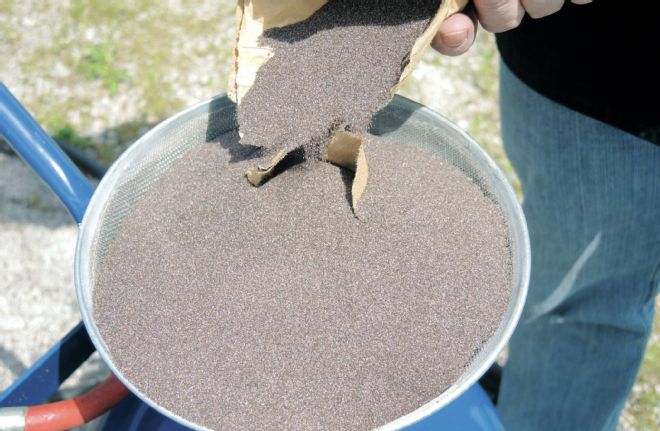
The second tank is loaded with aluminum oxide, which will clean surface rust from steel and help us remove layers of dirt, undercoating, and paint to get a good idea of what condition ZedSled's body is in. You can see that this is an aggressive medium that will get the job done quickly. Aluminum oxide is a better choice than sand, which can warp sheetmetal easily, and can cause serious lung problems if inhaled. Sand is cheaper, but aluminum oxide is safer.
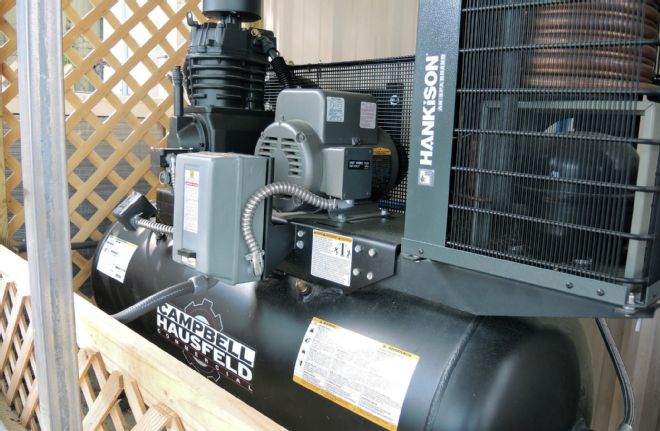
Air supply (not the 1980s band) is very important. Our Campbell Hausfield commercial grade compressor delivers 25 cfm at 90 psi and has an aftercooler to separate moisture from the air. Clean, dry air is critical to autobody work. Dirty, oily air will ruin a paint job in a hurry.
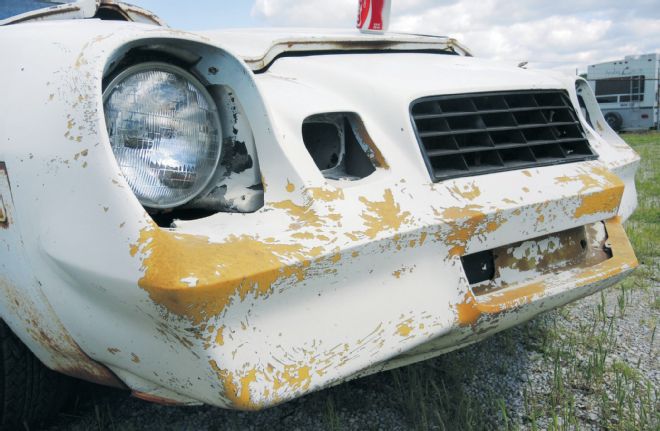
Our first panel is the sun-damaged urethane front bumper, which is pretty common among neglected 1978–1981 F-bodies. The paint has delaminated, and the fragile urethane fascia beneath it has deteriorated.
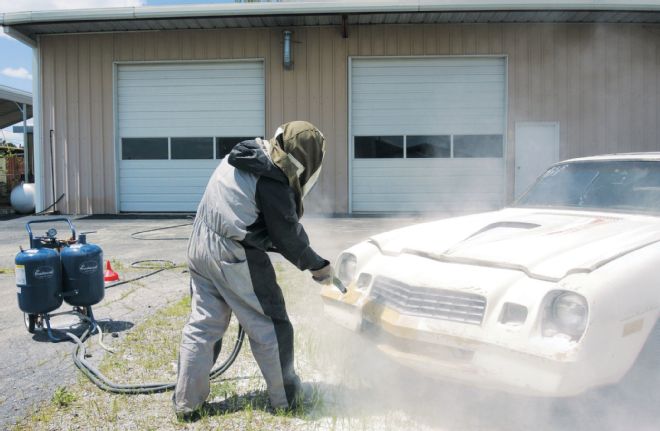
The soda creates quite a cloud, but it's absolutely green for the environment and will get absorbed into the ground safely with no toxicity. This photo also shows why the suit comes in handy—no soda in your personal cracks and crevices!

It takes seconds to remove the two paintjobs ZedSled wears, and the urethane under the paint is undamaged by the process.
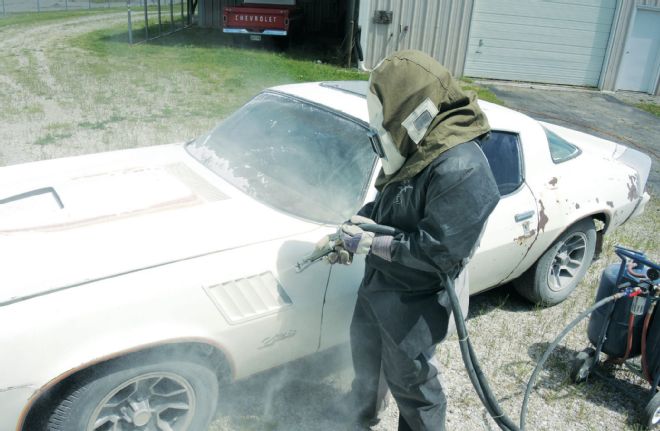
Next, we try blasting the pot-metal fender vents. We're using soda for this as well because it's a very soft and fragile substrate that would get severely pitted by sand or aluminum.
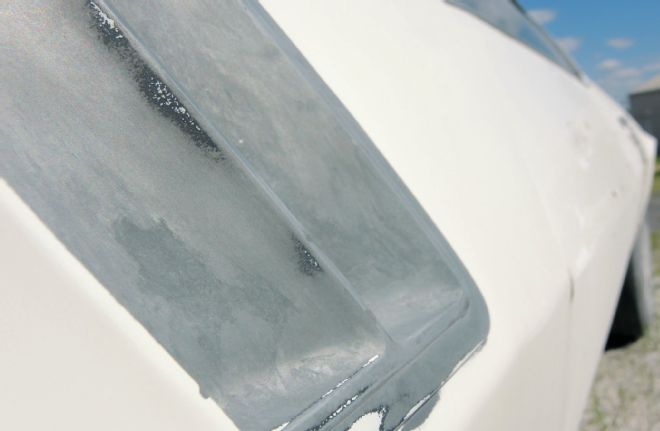
This photo shows the surface is left baby-smooth with none of the base material disturbed and no pitting. It's important to note that before repainting, the soda residue must be thoroughly cleaned. It can contaminate any primer and paint you spray over it.
Pro Touring doesn't have to be expensive, and we're going to prove it with ZedSled! This 1978 "soft bumper" Camaro is not nearly as desirable as the 1970–1973 second-gens, but it's basically the same car—sort of underpowered and oversmogged. We picked ours up for $1,800 and drove it onto the car-hauler to get it back to the shop. Everything is worn, it's rusty, but solid in the right places, and it's a real Z28. We're not setting a budget; rather, we'll spend wisely and keep a running tab to see what we end up with out-of-pocket.
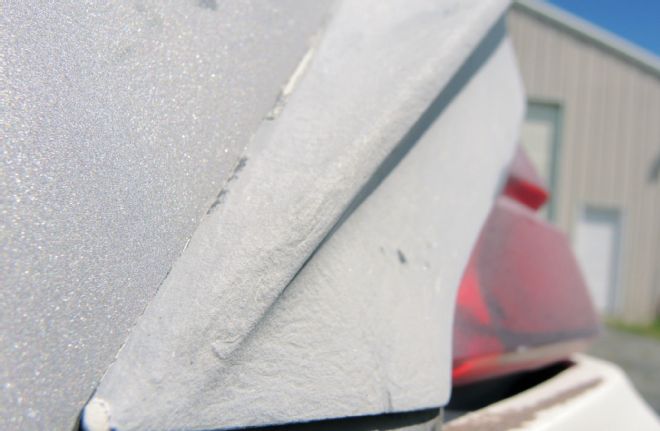
The fiberglass rear spoiler is next, and soda is the hero again—the paint just flies off the substrate. With things going so well, we got bold and decided to mix in a slight amount of aluminum oxide to speed up the process. That was big mistake, as you can see how it left a textured surface in the spoiler. On the soft substrates, stick with soda.
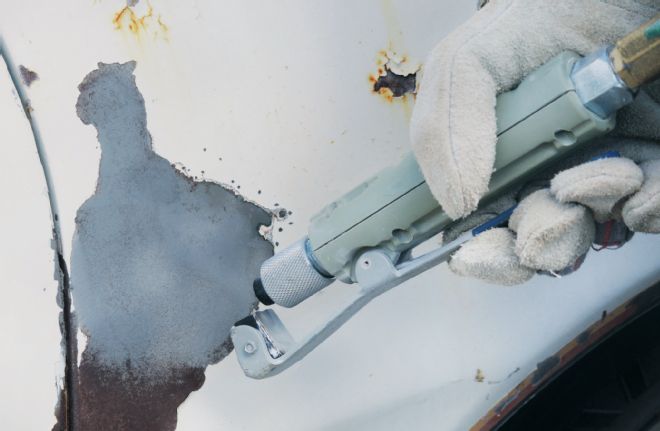
Using aluminum oxide on exterior sheetmetal is very effective in removing surface rust; it quickly cleans paint off the metal. Pitted rust is also removed instantly and without warping the panel.
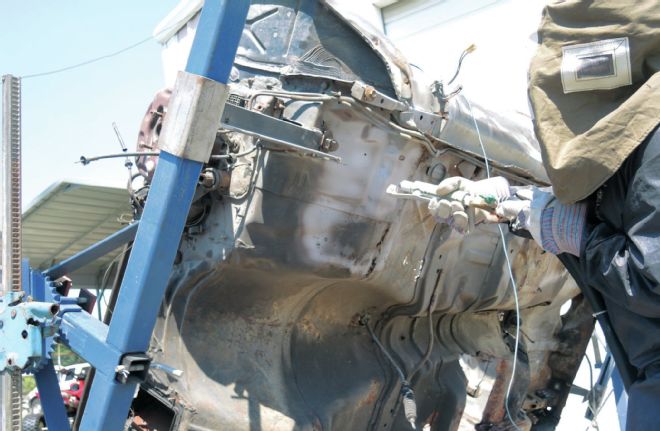
We tore the car down completely and mounted it on our Whirly Jig rotisserie to finish this job. If you can afford one, a rotisserie makes work like this, and the subsequent panel replacement, much easier because you are working in a more comfortable position.
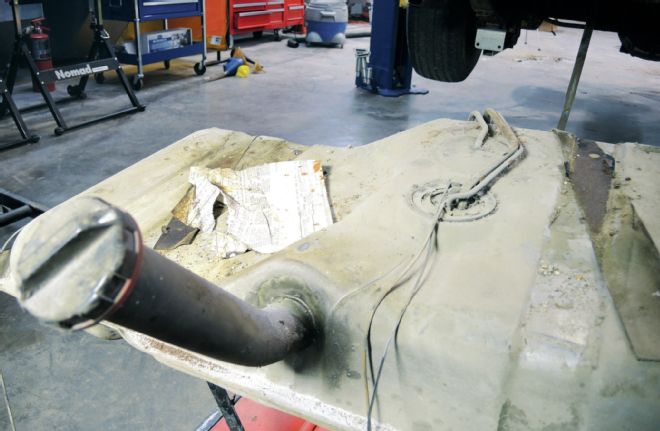
While disassembling the car, we found one of the build sheets between the gas tank and the trunk floor, and the other behind the back seat. Both miraculously survived, giving us confirmation that ours is a real "Z."
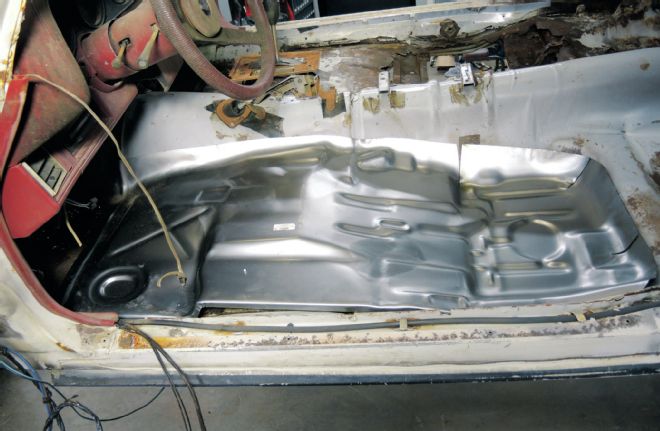
The trunk floor is solid on the passenger side, but severely pinholed on the driver side. We'll need help from National Parts Depot.
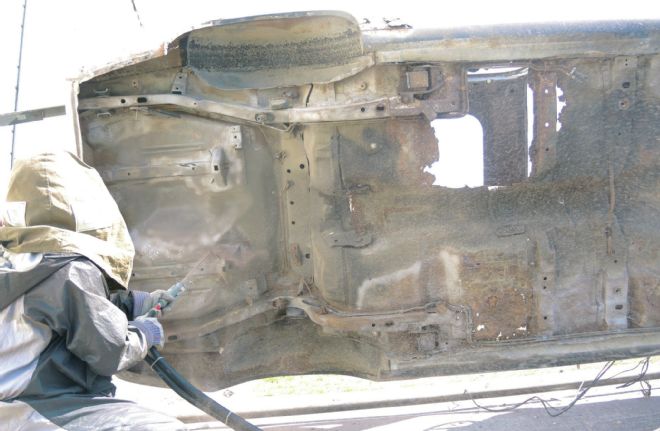
The rear framerails, torque boxes, and all of the structural braces are in great shape. It's a gamble when you buy a car that has rust, but this one was honest, and there are no real surprises here.
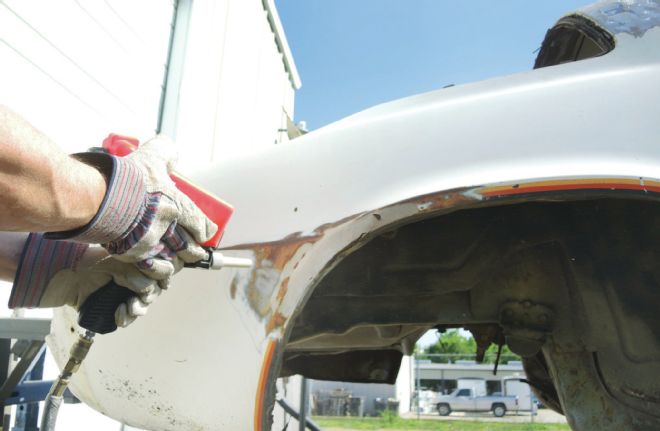
Eastwood's Speed Blast spotblaster has a much narrower pattern and less bounce back of the media. We used it to get into smaller areas.

A quick check of our floor panel shows that the driver side will be easily taken care of with a single pan. Note that 1978–1981 second-gens have different floors. National Parts Depot offers parts for either one, just specify what year yours is.
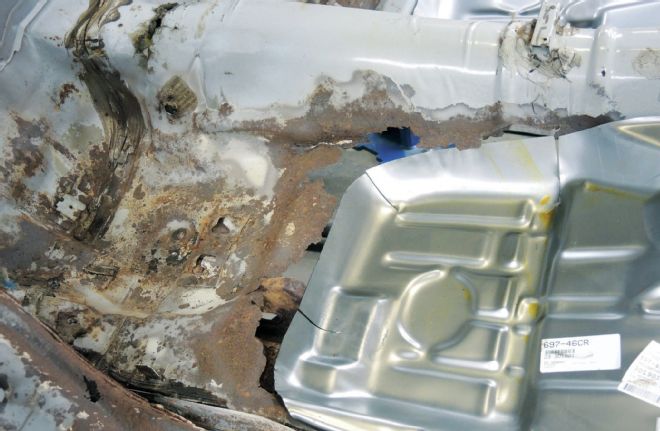
The gaping hole through the passenger-side rear is not so simple. We will have to fab some floor sections to fix the rust that extends past the replacement floorpan. Full floors available, but these pans are less expensive, so we opted to use DIY skills and solve this in one of the next installments on ZedSled.
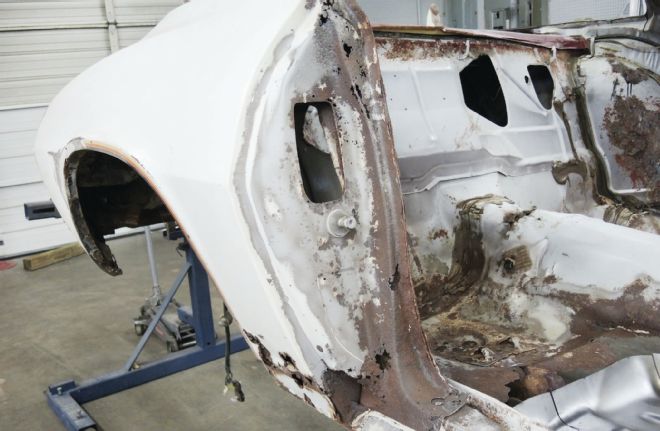
The lock pillar needs serious help. A full quarter-panel comes with this section, but like the floor, it is expensive. To keep the cost down, we plan to re-skin the quarter-panel, so we'll have to get creative with repairing this section. There's an affordable fix for this that's easier than you think. End
Parts List
Description PN Source Price Dual Blaster 11737 Eastwood $399.99 Speed Blast 22035 Eastwood 59.99 Soda blast media, 50 lbs 11086 Eastwood 39.99 Aluminum oxide blast media, 50 lbs 22021 Eastwood 67.99 Floorpan, left C12900-4A National Parts Depot 143.95 Floorpan, right C-12900-3A National Parts Depot 143.95